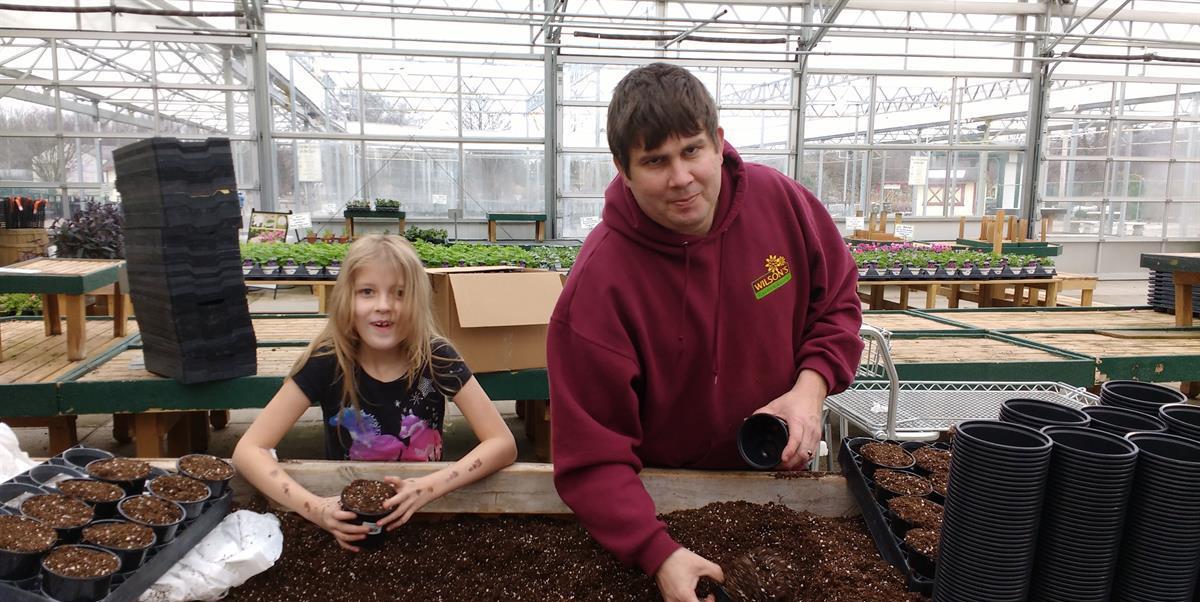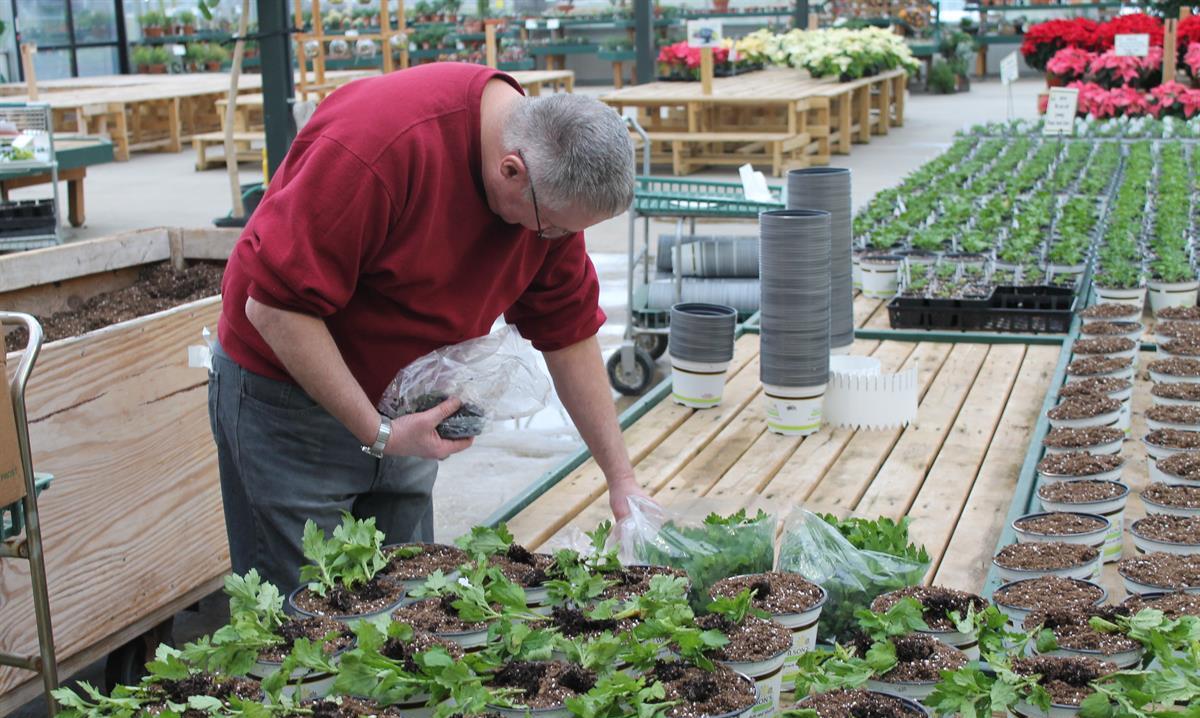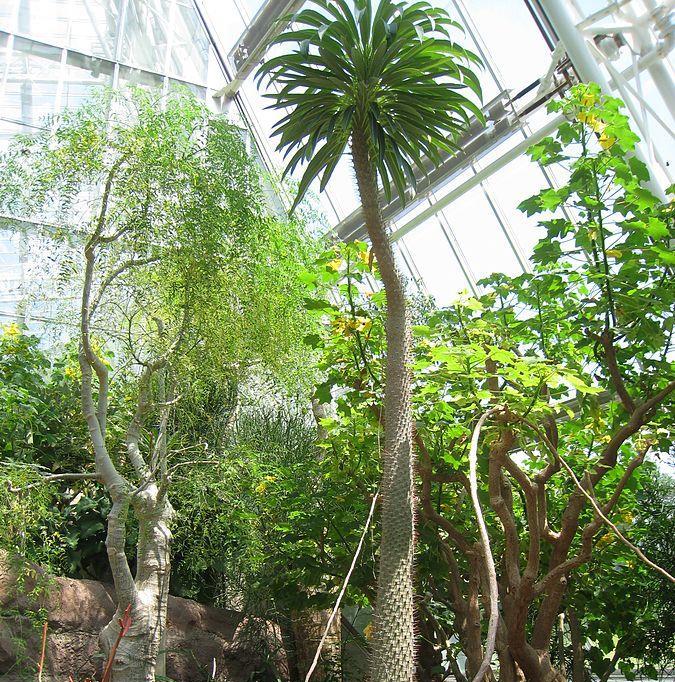| |
|
|
|
|
Good Afternoon Great-Gardeners,
From all of us here at the store have a Safe and Happy New Year! We will be open
9 am - 4 pm on December 31st and will be closed January 1st, 2nd and 3rd.
Our winter hours will resume Monday the 4th, 9 am - 5 pm, Monday thru Saturday and closed on Sundays. |
|

|
|
Jess & Brian planting primrose
|
|
|
|
Stop by in the coming weeks and check out what we are starting to grow for spring. Our production area gets moved up to our main green house for January and February to save on heating.
In this issue, bird seed types, your questions answered and mealy bugs.
If you have any questions, comments or suggestions, hit reply. I would love to hear from you. As always, have a great-gardening day.
Sincerely,
Holly |
|
|
I'm a gardener and I'm OK
I sleep all night and I plant all day!
I dress in grubby clothing, and hang around with slugs.
Oh I'm happy in the garden
With dirt and plants and bugs . . .
|
|
|

|
|
Ned planting Regal Geraniums
|
|
|
|
| |
How well is your garden going to grow?
Scroll down to bottom of email for answer.
|
|
December 31st
Is Your Last Day To Use Your 2015 Hurry Back Bucks.
|
|
Mealy Bug
Mealy bugs are hard to get rid of once you have them. Early detection is the key to plant survival.
Severe infestations look like patches of cotton on the plant. During the feeding process, they excrete lots of wax (known as honeydew) and if left on the plant can lead to the growth of sooty mold.
The excretion is used for protection while they suck the plant juices. It is also a place where they hide their eggs. It takes about 10 days for the Eggs to hatch producing crawlers or nymphs.
What to look for:
You will notice a fluffy white wax produced in the leaf axils or on the stems and branches of the plant.
You will notice that the plant has lost its vigor and the leaves start to turn yellow and eventually drop. As a result, plants may be stunted, or even killed.
The best control for mealy bugs is defensive. Healthy, vigorous plants are less likely to be infested than the weak ones.
Water – works well in early stages of infestation. Simply blast the bugs off with a strong stream of water. Needs to be repeated daily until they are gone.
Insecticidal Soap – Follow instructions on back of bottle. This is a contact spray so bugs have to be present in order for it to work. Safe to use around pets and children.
Neem Oil – Safe around pets and children. Can be sprayed on plants following directions on back of bottle. Bugs must be present in order for it to work.
Bonide Systemic Housepant Insect Control – This chemical actually gets soaked up into the plant and if the bugs chew on the plant they will die. The bottle says it can prevent bugs for up to two months. Just follow directions on bottle for use. This is not organic and says to keep out of reach of children and pets.
Throw Out Plant: If infestation is to the point of beyond control. Your best option is to pitch the plant into the garbage. Do not compost.
If left untreated mealybugs will spread to other plants in the house.
|
|
Wilson's Garden Center
10923 Lambs Ln.
Newark, Ohio. 43055
740-763-2873
740-763-2874 (Fax)
office@great-gardeners.com
|
|
Winter Hours:
Monday - Saturday:
9 am - 5 pm
Closed Sunday
New Years Eve:
9 am - 4 pm
Closed Jan 1st & 2nd
|
|
We are a family owned and operated garden center specializing in plants that thrive in Central Ohio
For more information about our store please
Visit Our Website |
|
|
Bird feeding is the second fastest-growing hobby next to gardening. It is a great way to enjoy wildlife. Not only is it entertaining, but it can also be educational and a great stress-reducer.
There are many different types of bird seed that can be used. Listed below are some of the most common ones that we carry here at the store. |
|
|
|
Sunflower:
There are two types of sunflower seeds
Black Oil - high fat content - thinner shell
Striped - larger and has a tougher shell
Sunflower seed can be used in a wide variety of feeders, including trays, tube feeders, hoppers, and acrylic window feeders. Do not use sunflower hearts or chips in tube feeders.
Black Oil Attracts:
- Cardinals
- Finches
- Sparrows,
- Nuthatches
Striped Sunflower Attracts:
- Jays
- Titmice
- Cardinals
- Grosbeaks
- Woodpeckers
|
|
Nyjer:
Nyjer is not the same as Thistle seed although many people call it Thistle. It comes from a plant called Guizotia abyssinica which is from Africa. During processing it is heat-sterilized to prevent it from sprouting and spreading. Nyjer is a great energy source for birds and very popular as a winter bird food.
It can be used in mesh feeders or feeders with tiny ports.
Attracts:
- American Goldfinches
- Dark -Eyed Juncos
- House Finches
- Mourning Doves
- Purple Finches
- Song sparrows
|
|
Corn:
Cracked corn is rich in both protein and fiber. Make sure to keep dry in order to prevent aflatoxins which can harm birds.
Do not use in tube feeders. Sprinkle on ground in small amounts for ground feeding birds or in tray feeders.
Attracts:
- Cardinals
- Blue Jays
- Doves
- House Sparrow
|
|
Peanuts:
Are a high-energy food.
Can be used in peanut feeders or platform feeders. Make sure to keep dry in order to prevent aflatoxins which can harm birds.
Attracts:
- Blue Jays
- Crows
- Chickadees
- Woodpeckers
|
|
Suet:
Suet is a great source of protein and carbohydrates. It is also an important source of fat for birds during the winter months.
New blends of suet that do not melt have made placing suet out year round common place. In the past, most suet was placed out from autumn until spring when insects were not as plentiful.
Use in suet feeders.
Attracts:
- Nuthatches
- Woodpeckers
- Wrens
- Chickadees
- Cardinals
|
|
Q. My tulips, daffodils and hyacinths are coming up. Is there anything I need to do to protect them?
A. No, there is nothing you need to do to protect them. With all the warm weather we have seen over the last month it has tricked the bulbs into thinking it is Spring. The bulbs may bloom a month earlier than usual, or they may bloom on schedule, but they should bloom just fine. The leaves are tough and the flowers are still safe inside the bulbs. It is important not to cover them with mulch in order to try to protect them this can do more harm than good. |
|

|
|
By Daderot (Own work) [Public domain], via Wikimedia Commons
|
|
|
|
|
|
|
| |
|
|
| |
|